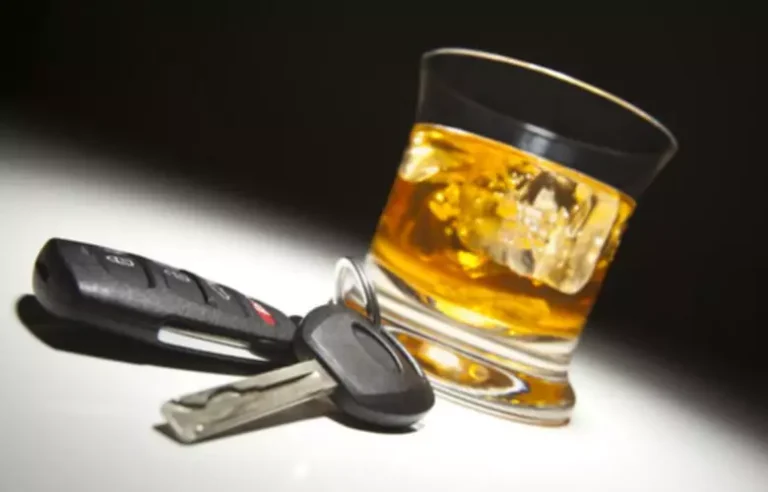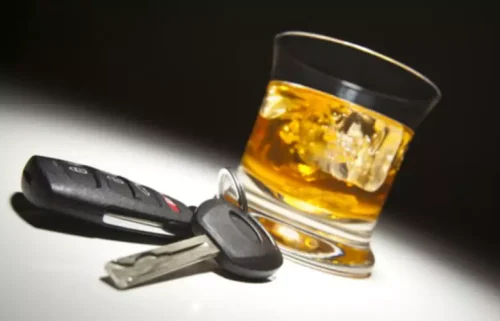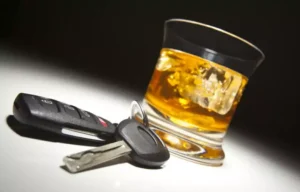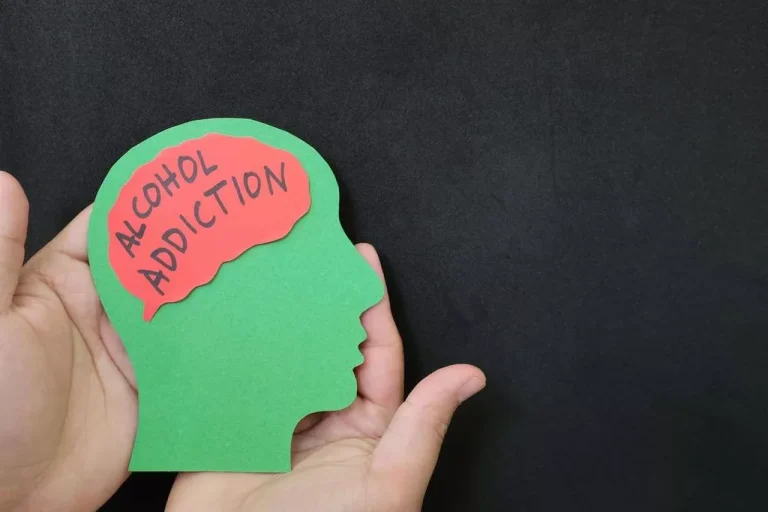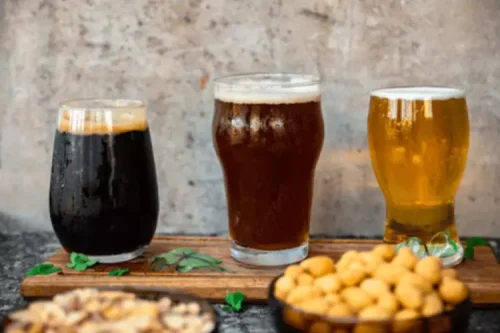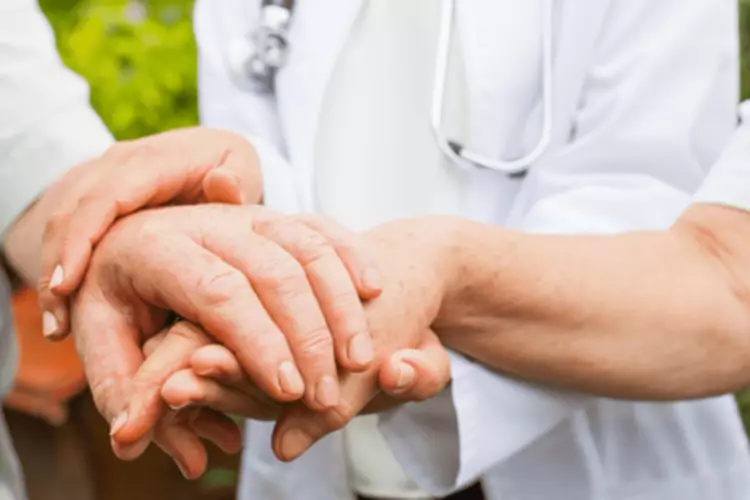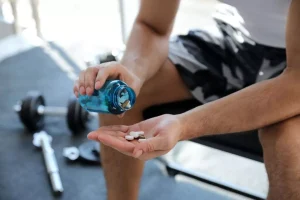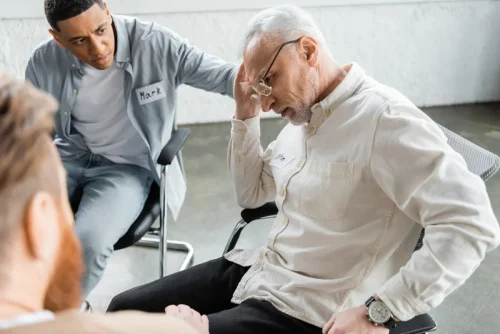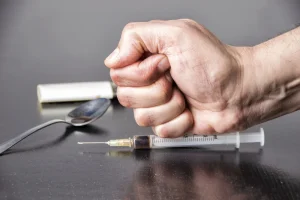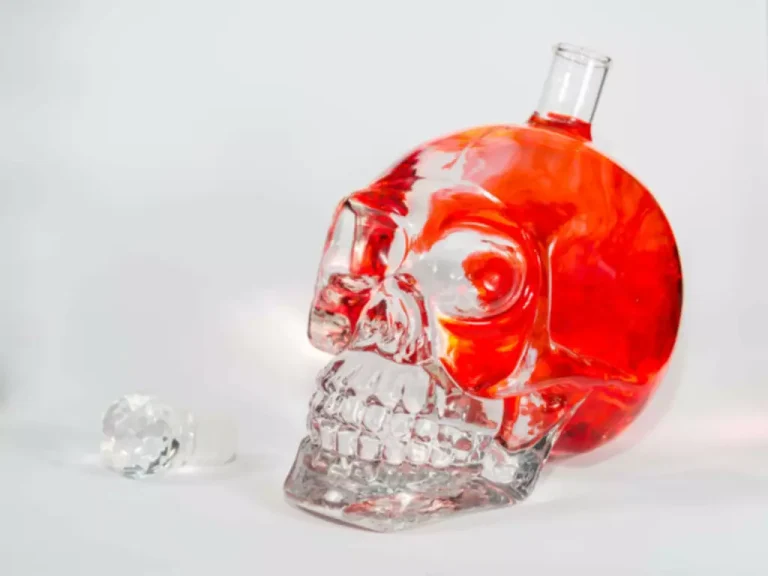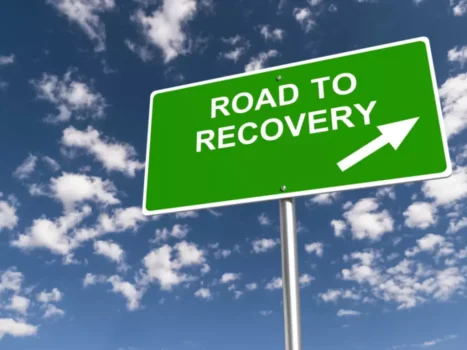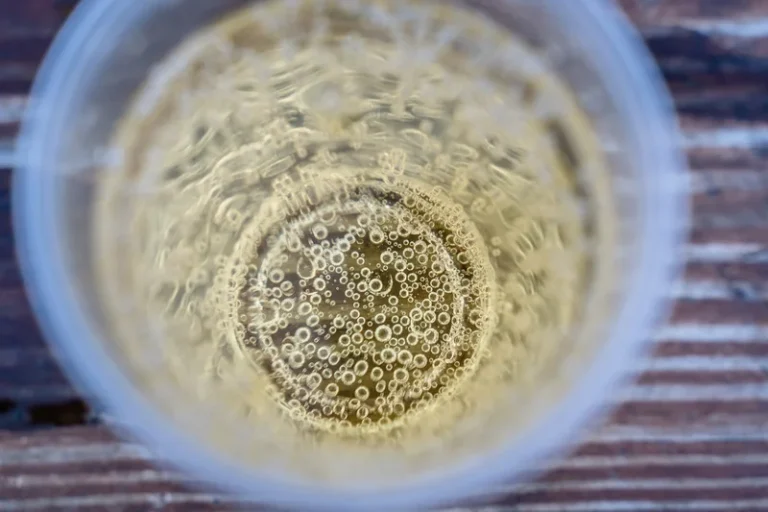Your cart is currently empty!
Category: Sober living
MDMA Molly, Ecstasy Effects, Risks, and Treatment for Addiction
Treatment for MDMA use disorder involves management of withdrawal symptoms, reducing cravings for the drug, and preventing relapse. Some people do show signs of drug dependence and withdrawal with regular molly use. Use of the drug becomes compulsive even when it causes harm, like experiencing poor health or losing relationships or jobs.
Even though ecstasy includes addictive ingredients, there is very little research to prove that you can get addicted to the drug. Research shows drugs like cocaine have a higher potential for addiction than ecstasy. High doses of ecstasy can cause a spike in your body temperature.
Rising recreational use
Ecstasy overdose symptoms can include faintness, panic attacks or extreme anxiety, high blood pressure, and seizures. When ecstasy use is followed by vigorous physical activity, it can lead to a potentially dangerous rise in body temperature known as hyperthermia. The immediate impact of ecstasy begins within about 45 minutes of taking a dose.
- People may try to lessen these effects by taking time to cool off and drink fluids — ideally juice or drinks with electrolytes.
- Researchers’ understanding of MDMA toxicity has evolved over time.
- Concerns are especially high for those who are still in middle or high school as their brains are not fully developed.
- People with MDMA-induced euphoria who dance or exert themselves in hot or confined areas, such as at a rave, club, or dance party, are at risk of experiencing heatstroke.
Is There Treatment for Ecstasy Addiction?
It’s important to know that the effects of ecstasy will be different from person to person. Your health, weight, the amount you’ve taken, and other drugs used with ecstasy can all play a role. These differences can cause a person to react differently to the effects of ecstasy when on the drug and coming down from it. Although molly is marketed as a purer form of MDMA, there are wide variations from batch to batch. Instead they contain drugs like designer fentanyl, caffeine, cocaine, ketamine, bath salts, or other substances.
This refers to a sudden increase in body temperature, cardiovascular collapse, or significant dehydration. Ingesting other substances, such as cannabis or cocaine, along with MDMA greatly increases the danger of adverse reactions. These harmful substances can be particularly signs you were roofied dangerous when a person mixes them with MDMA. When people buy MDMA from dealers on the street, they do not know what they are taking. Not all the effects are predictable because pure Ecstasy can contain other unwanted drugs or chemicals. As the drug is illegal, there is no government regulation over its production.
What are the effects of MDMA?
Although ecstasy affects many neurotransmitters in the brain impacted by other addictive drugs, the National Institute on Drug Abuse notes that research has not determined whether MDMA is addictive. The American Society of Addiction Medicine shares that the definition of addiction is continued use despite harmful consequences. MDMA, also known as ecstasy or “molly,” is a drinking when bored synthetic drug known primarily for its hallucinogenic and stimulant effects. MDMA is short for its chemical name 3,4-methylenedioxymethamphetamine.
Is molly legal?
Researchers’ understanding of MDMA toxicity has evolved over time. While the drug was initially thought to cause immediate dependence and pose a high risk to public health, current studies no longer indicate for sure that MDMA can cause addiction. MDMA primarily increases the release of serotonin and norepinephrine. Serotonin is crucial for regulating mood, sleep, pain, appetite, and other functions, and the increased release of serotonin contributes to MDMA’s mood-elevating effects.
MDMA is being explored as a treatment for certain medical conditions, such as post-traumatic stress disorder (PTSD) and depression. Researchers are studying how drugs with psychedelic properties, including MDMA, can be used to treat mental health conditions. Taking an adulterated drug can lead to unexpected and unwelcome side effects and may increase its potential health risks. Over the past decade, illegally made opioids like fentanyl have been increasingly found in the drug supply, and have contributed to a dramatic rise in drug overdose deaths in the United States. In one smaller study in Sweden, researchers followed 50 people with severe mental health conditions for 5 years as they participated in psychedelic-assisted therapy. They found that most participants experienced improvements in their mood, emotional control, memory, and relationships.
Animal studies show that MDMA in moderate to high doses can damage nerve cells in the brain. A person taking the drug will feel the effect within 1 hour, and it can last up to 6 hours. In 1985, powerlessness aa the Drug Enforcement Administration (DEA) labeled MDMA a Schedule 1 substance. This category refers to a drug with high abuse potential and of no recognized medicinal use.
Love Addiction: The Stages of Codependency

Outside of professional support, aiming to rediscover your individuality can be helpful. You can try spending time alone and pursuing individual interests and former hobbies. Reach out to friends and family to start rebuilding relationships separate from your partner. In contrast to SUD, 2016 research called love a “natural” addiction that can be a common, healthy thing to experience. While 2021 research shows that the end of a relationship can induce withdrawal-like symptoms, they might also be explained as grief.

Making Sense of Your Life

Get feedback, make tough decisions, and implement change in real-time. Key signs that an individual is in recovery and is open to a relationship. Positive self-talk can also help you feel better about yourself and lead to stronger relationships. Or perhaps you’re searching for something you’re unlikely to find (like romanticized love that mostly only exists in the media).
Rules You Shouldn’t Break While Handling Someone’s Addiction
As long as someone is in the midst of their addiction and not receiving help, a relationship with an addict is virtually impossible. An addict will do everything to keep using including lying, cheating, and stealing. To provide insight to any of these questions, it’s important to understand addiction and what it does to relationships. There are also situations where both people are addicts so the question may become can two addicts have a healthy relationship. There are a few different scenarios where you might wonder what it’s like being in a relationship with an addict, or whether or not it’s possible to have a relationship with an addict. The first could be if you were already in a relationship with a person before they were an addict, and now they’re in the midst of addiction.
- They are fearful of being alone or rejected, so they endlessly search for that special someone to make them feel whole.
- As you’ll read later, love addictions form as a result of painful childhood experiences.
- It just means you have to work together to learn more about each other and find a middle ground.
- That means you have an established self-identity and don’t lose it in the relationship.
- It can take time to trust a loved one again, especially if they’ve lied, exhibited harmful behaviors, or stolen from you.
- A therapist can work with you to identify and address thought patterns or underlying issues contributing to these feelings and behaviors.
Common Signs and Symptoms Of Love Addiction

It is normal to idolize romantic partners by putting them on a pedestal. In the case of love addiction, however, the love addict may obsessively put their partner on a pedestal to their detriment. The partner may not even be emotionally responsive, affectionate, or may be when you love an addict abusive. Although the causes may vary, a commonality of love addiction may be a false notion that your romantic partner will save you. Dye explains that this may cause partners to pull away because it may feel overwhelming or exhausting.
Successfully Dating a Person with an Addiction
It should not be used in place of the advice of your physician or other qualified healthcare provider. It should not be used in place of the advice of your physician or other qualified healthcare providers. Unfortunately, “love addicts” usually pick a love-avoidant person to partner with, which triggers an unhealthy cycle, because the love-avoidant is terrified to have anyone get too close, so they push you away.
- You will likely see that if you’re in a relationship with a drug addict, they become a completely different person than the one you originally knew.
- The first step in recovering from love addiction is to recognize the problem.
- If you’re seeking help for yourself or a loved one, our expert team is here to guide you every step of the way.
- Crystal Raypole has previously worked as a writer and editor for GoodTherapy.
- This fear can manifest as avoidance of physical or emotional closeness, guardedness in relationships, or self-sabotaging behaviors.
- Love addiction creates challenges in relationships and can play itself out in a variety of unhealthy behaviors.
- There is no easy, single answer, but researchers believe it comes down to a combination of genetics, trauma from childhood, and other psychiatric problems, such as anxiety, depression, and bipolar disorder.
- Although more common in romantic relationships, love addiction can occur within families, in friendships, and even with strangers.
- Additionally, obsessiveness and anxiety can occur that love addicts cannot fix alone.
- What I always wanted was to love and to be loved, and now I couldn’t ever have that… because I was addicted to love.
- This drives us to either want overly dramatic and intense emotions in relationships, or at times, detach completely for fear of neglect and abandonment.
To understand how to live with a loved one who has an addiction, it’s important to first learn the driving forces behind the addiction itself. “This includes communication with the partner, with yourself and even with friends and family before entering a relationship,” explains Dr. Gerardo. Dr. Gerardo also warns of love addiction affecting your day-to-day life.

The review’s authors argue that there is behavioral, neurochemical, and neuroimaging evidence from various studies to show that love can be an addiction similar to SUD. When we think of addiction, our minds may immediately drift toward substance use disorder (SUD), which involves substances like drugs and alcohol. A codependent relationship often begins with one person putting their partner’s needs above all else — including their own needs, interests, and independence. It can take time to trust a loved one again, especially if they’ve lied, exhibited harmful behaviors, or stolen from you. You may need to work with a therapist to help you both reestablish the much-needed trust your relationship needs to thrive. Inpatient rehab may be a short-term solution, while counseling and health coaching can be long-term options.
How to Get Sober: A Guide to Sobriety

Join hobby groups, participate in sports, go on outdoor adventures, attend cultural events, or host sober gatherings with friends. Linda, a 28-year-old recovering from opiate addiction, benefitted significantly from her stay at Oxford House. The peer-led home provided a https://ecosoberhouse.com/ safe living environment, and the sense of responsibility and belonging she felt was transformative. For many, returning to daily life after treatment means returning home to family, which is why family can be the strongest social support system. However, relationships within the family may have been impacted by substance misuse and therefore, require mending. Medical support can also wean you from certain substances slowly, helping the brain and body adjust to the loss of the substance more gradually and minimizing some withdrawal symptoms.
Alcoholics Anonymous (AA)

There is no fee to join AA, but members accept donations to help support local groups since they do not accept outside contributions. AA also operates on the tradition that the group’s common welfare comes first, and the only requirement for membership is the desire to stop drinking. Ultimately, the goal of the group is to carry its message to alcoholics who are still suffering. Elizabeth Brownfield is a freelance writer, editor, and researcher who specializes in food, travel, home, and lifestyle content.

The Importance of a Sober Support Network

They are environments free of substance abuse where individuals can receive support from peers who are also in recovery. There is no time limit on how long someone can live in a sober living house. While meeting attendance and household duties may be required, there isn’t regimented treatment programming present in the home. Sober living houses are often recommended for folks finishing up a drug rehabilitation program.Leaving the structure of a treatment program can be jarring, sometimes triggering a relapse. As such, sober living houses serve as a space to transition into a life without addiction, developing tools and community while getting used to the demands of daily life.
Building Bonds and Personal Connections
At Pathways Recovery, we provide a comprehensive range of treatment programs to help as many individuals as possible break free of addiction for good. Contact us today to learn more about how we can help you start your road to recovery. Let’s face it, your addiction recovery journey will likely be filled with many ups and downs. From seeking professional addiction treatment to building a sober support network, there are many individuals you can lean on throughout recovery. Whether you are looking for motivation or sober network people to keep you accountable, your sober support network provides constant love and support as you begin to take back control over your life. Because recovery is largely reliant on a sober network, our mission at Turnbridge is to make this support obtainable.


Getting others to support your recovery involves communicating your needs clearly and asking for their understanding and assistance. Surround yourself with people who respect your journey and can provide encouragement and accountability. Building a supportive network requires regular interactions and genuine care. Regular check-ins, celebrating achievements, and being there during tough times are essential. Attend events, send encouraging messages, and actively participate in each other’s lives. Group therapy provides a supervised environment where individuals can discuss their struggles and progress.
- It’s important to note that your sober support network should not include unsupportive individuals or individuals who are not healthy themselves.
- Explore the issues facing queer people of color in the rooms of recovery.
- In fact, getting sober and sustaining sobriety is easier when you have a trusted support system motivating, encouraging, and supporting you along the way.
Mansion History
If a tea is sold out and you are interested in that date, please call our tea line about wait list opportunities or fill out the form here. Please do not request to join the wait list in advance of the public on sale date. Celebrate Black History Month with customary food and wonderful jazz musicby pianist Michael Peay. The public-private partnership between Strathmore Hall Foundation, Inc. assumes the day-to-day management and artistic programming of the Music Center and Mansion. Hundreds of donors stepped forward to help build, equip and sustain the operation of the Music Center.
Footer Navigation
In 1998, the Montgomery County Council and the Maryland State Legislature approved matching capital support ($48 million each) for the Music Center at Strathmore. After the design team was selected in 2001, work began under the direction of the county. In 1977, the Sisters of the Holy Cross sold the mansion to the American Speech and Hearing Association Review Maverick House (ASHA) as a temporary headquarters.
Afternoon Tea
On June 21, 1983, after major restoration of the facility, Strathmore opened its doors to the public. Strathmore is in the process of researching the history of the land that we occupy to ensure proper acknowledgment of those who were here before us. Strathmore is a premier art institution of the mid-Atlantic region, hosting more than two dozen exhibitions a year. A sweet treat of romantic music and scrumptious cuisine for you and your sweetheart. Located on the Bou Family Terrace, “Tetra Con Brio,” a monumental sculpture of cast bronze, steel, and polished concrete, stands 12 feet (3.7 m) tall and weighs 4,500 pounds.
There are more than two dozen exhibitions each season from local artists and from collaborations with renowned museums, such as the Baltimore Museum. The Gudelsky Gallery Suite, located at the top of the grand staircase, was named after philanthropists, Homer and Martha Gudelsky. Supported by a donation from the Gudelsky Family Foundation, this gallery features four galleries. It is the only venue of its kind in Montgomery County.citation needed There is also a Sculpture Garden that winds through the complex’s 11 acres (45,000 m2). In 1908, The Oysters sold the house and 99 adjoining acres to Charles and Hattie Corby. The Corby family enjoyed the house as a summer retreat until 1912, when they contracted Charles Barton Keen to make extensive modifications.
History
Having constructed new schools and residences nearby, the sisters sold the Mansion and its remaining 30 acres to the American Speech-Language-Hearing Association (ASHA) in 1977 for use as its temporary headquarters. Lord Baltimore granted Thomas Brooke, Jr. the land where Strathmore is now located. Ownership and usage of the land is not well-known until 1823 when a toll road was built to connect Georgetown and Frederick. One of the road’s tollgates was near the intersection now known as Strathmore Avenue. As shown on an 1879 map, local landowner Frank Ball operated a stagecoach station and blacksmith shop on his farm at this location. Indulge in holiday fare from Scotland accompanied by a talk from Jo Morrison about Highland history and music.
Today, the organization’s hallmark is the Music Center at Strathmore, with a 1,976-seat concert hall and education complex that debuted in 2005. Strathmore quickly established itself as an important new cultural resource—not just for Montgomery County, but for the entire Metro DC region. The Mansion was bustling with energy and many of Strathmore’s most enduring offerings—including intimate concerts in the Music Room, Afternoon Tea, visual arts exhibitions, and wedding venue—began during this time.
- Located on the Bou Family Terrace, “Tetra Con Brio,” a monumental sculpture of cast bronze, steel, and polished concrete, stands 12 feet (3.7 m) tall and weighs 4,500 pounds.
- In addition to exterior improvements, the renovation saw the addition of a sculpture garden, which features pieces along a path winding through 11 acres of landscaped grounds.
- Above the stage, a mechanized canopy of 43 individually controlled acrylic panels can be adjusted to fine-tune sound for clarity and reverberation.
The complex is thus accessible for patrons coming from Washington, D.C., as well as the northern part of Montgomery County, Maryland via the Metro rail system. In 1942, Filipino president Manuel L. Quezon used the Mansion to set up temporary governmental headquarters and World War II operations for the former Commonwealth of the Philippines. Movie buffs will enjoy our tea and tasty treats while guessing the song and which movie they are featured in.
Celebrate the Year of the Snake with traditional food and beautiful Chinese folk music. ‘Tis the season to indulge in holiday delicacies while enjoying timeless Christmas tunes from the past. Our website works best with the latest version of the browsers below, unfortunately your browser is not supported. Using an old browser means that some parts of our website might not work correctly.
Building a Healthy Sober Support Network

Promoting a mindfulness approach to sobriety, Club Soda offers live events worldwide to help connect people who want to cut down, stop briefly, or quit drinking altogether. When you’re traveling, you can take your sober support network with you — right in your pocket. Life is about the connections we make and the people we help along the way. Once you have your sober network in place, you’ll feel the embrace of community, and you’ll find confidence in your own sobriety. There are many, many digital communities, hashtags and chat groups that give people in recovery a place to connect and discuss what’s going on in life. You can find common ground over the challenges of sobriety, the rewards of recovery and the fallout from addiction.
Support the movement
- Additional meetings are led by Recovery Dharma Online, a peer-led effort coordinated by members of the Recovery Dharma group.
- Dillon said that resources for LGBTQ+ people in recovery are growing, including Queercovery.
- There are recovery groups for people of different religions, cultural backgrounds, and professions in addition to more general recovery groups.
- After completing an in-app questionnaire, you can participate in community conversations, track your long- and short-term goals, and receive expert support.
- While the majority of these groups are free to join, some do require a monthly or annual investment.
- Knowing that you are sincere about your recovery may allow the other person to be receptive to communicating with you and eventually trusting you again.
These are people who are willing to drop everything to help others with sobriety. Addiction kills relationships, in slow erosions or big explosions. So when you embark on recovery, it’s natural to feel bewildered by everything you’re going sober network to take on — and alone in doing it. In a first approach, we pooled all data sets for a given absolute spike threshold (Fig. 5a), which revealed a consistent subregion of χ ≅ 2 for different spike density threshold levels (Fig. 5b).

All Sober Life Supporters
Online sobriety and alcohol recovery groups can help you navigate your journey to getting better. Sobriety support groups are organizations dedicated to helping those seeking a sober life connect with other like-minded individuals and find ways to jumpstart their new lifestyle. Sobriety support groups are not the same as treatment facilities and should not substitute for addiction treatment. LifeRing offers online and in-person meetings that promote self-empowerment rather than belief in a higher power, making it a good alternative to faith-based recovery groups. Loosid offers a variety of online tools for support and provides interaction with others to encourage connections and networking while enjoying a sober lifestyle.
Your Network Should Include Addiction Professionals
The organization recommends using its online tools in addition to face-to-face meetings. These online tools have been a substitute connection method for members during the COVID-19 pandemic. Soberistas is a social network that connects people who are trying to overcome alcohol misuse or continue on the path of abstinence. The website features testimonials, stories, and webinars with members who are in recovery. Online alcohol support groups also require consistent access to the internet and tools like a computer or smartphone that allows you to connect via video services. Read more to see whether an online sobriety support group is right for you.
It’s a group of people, usually in recovery themselves, that you can rock with when times are great and lean on when times get tough. Your sober network may also include your counselors or coaches that specialize in recovery and sober allies in your family, friend group or workplace. In active addiction, many people choose isolation over connection.


Keep reading to learn more about what a sober support network is, and how you can build your own support network. Although developing a sober support network is a priority during the early stages of recovery, this does not apply to dating. In fact, if you’re not currently married or in a long-term relationship, it’s best to avoid starting any new romantic relationship for at least one year.
How Waypoint Recovery Center Can Help You Build a Strong Support System
You can do this by curating your social media feed so you’re not knowingly stepping into FOMO traps. A large component of support groups is spending time talking with other people who are in the same situation as you. This “peer support” time together has been shown to be incredibly beneficial and often results in higher substance use abstinence rates and feeling more satisfied with substance use treatments. The app also offers help for people living with addiction with six 24/7 hotlines. Loosid is a free app for your smartphone that encourages you to have fun while staying sober. The most popular feature on the app is its dating network that lets you create a profile and match yours with other singles using the app.
Addiction Treatment:
One of the critical components of this support system is a sober network. A sober network is a group of individuals who are also in recovery and provide support, guidance, and understanding. It helps individuals stay accountable, provides a sense of belonging, and offers a safe space to share experiences and challenges. Without a doubt, addiction can fracture relationships with loved ones; however, that doesn’t mean these relationships are broken forever.
- Sobriety support groups are organizations dedicated to helping those seeking a sober life connect with other like-minded individuals and find ways to jumpstart their new lifestyle.
- The path of recovery generally includes a variety of counselors, doctors, and advisors.
- Chances are that you were introduced to the concept of recovery groups and may have even joined a group prior to graduating from your treatment program.
- For example, SMART Recovery is a group that appeals to people with whom the spiritual nature of the traditional 12-Step program does not resonate.
- Choose from hundreds of groups and subjects that focus on issues that matter to you.
From seeking professional addiction treatment to building a sober support network, there are many individuals you can lean on throughout recovery. Whether you are looking for motivation or people to keep you accountable, your sober support network provides constant love and support as you begin to take back control over your life. As you connect with others who are in recovery, you will likely find yourself feeling https://ecosoberhouse.com/ more hopeful, optimistic, and inspired about your own life in treatment. In addition to connecting with others who are in recovery, sharing your experiences with trusted people who have never experienced addiction will gradually reduce the social stigma that many addicts encounter. Working to build and expand your support network will help you become a healthier, more active member of your community.
Substance Abuse and Mental Health Services Administration
Synthetic cannabinoids, also called K2 or Spice, are sprayed on dried herbs and then smoked, but can be prepared as an herbal tea. Despite manufacturer claims, these are chemical compounds rather than “natural” or harmless products. These drugs can produce a “high” similar to marijuana and have become a popular but dangerous alternative. Signs and symptoms of drug use or intoxication may vary, depending on the type of drug. We have strict sourcing guidelines and only link to reputable media sites, academic research institutions and, whenever possible, medically peer reviewed studies. Helping to End Addiction Long-term® https://www.cialpharmedi.com/2019/02/ and NIH HEAL Initiative® are registered service marks of the Department of Health and Human Services.

Everyone deserves addiction treatment that works — including those in jail
‘Private’ rehab simply means that you are looking to pay the costs of treatment yourself or via private healthcare insurance, at an independent addiction treatment provider. Reducing the risk of relapse in addiction recovery is intricately tied to building a supportive environment that fosters well-being and sustains positive behavioral changes. A robust support system plays a pivotal role in an individual’s journey towards recovery.
Is Addiction Treatment Really Free of Charge?
Discover the risks of drinking and pregnancy, guidelines, and support for a healthy journey for you and your baby. Many people who are struggling with alcohol use disorder are fearful of going to a treatment facility to… Discover proven ways to beat boredom in addiction recovery through hobbies, community, and new skills. There’s evidence showing significant recovery in brain volume and function, particularly in areas responsible for coordination and processing.

Drugs, Brains, and Behavior: The Science of Addiction

This inclusivity fosters a sense of empowerment, encouraging active participation in the recovery process. Whether through individual or group therapy, medication-assisted treatment, or holistic interventions, tailoring the approach to the individual’s circumstances enhances the effectiveness of addiction recovery efforts. He states that research shows that family-based support for addiction recovery is critical but often http://modnaya.ru/shop/aliexpress/2003-1/200000532/200000663/Costumes-Accessories.htm not obtained.
- Once you understand your triggers, you can put things in place to reduce the chance of relapsing again.
- We can provide a range of aftercare options to help you stay on track with your recovery journey.
- Stress is a major stimulus for drug craving, according to people with opioid addiction.
Family Matters
- You’ll soon start receiving the latest Mayo Clinic health information you requested in your inbox.
- These groups provide a safe environment to share experiences, enabling members to gain strength from one another.
- Each patient’s circumstances are different, and the type of therapeutic input needed for recovery will vary according to a range of individual factors.
- While the latest national figures show that the overall uptick in drug deaths is finally beginning to reverse course, Oregon remains an exception to the trend.
Studies show that craving for alcohol peaks at 60 days of abstinence. • Connection—being in touch with others who believe in and support recovery, and actively seeking help from others who have experienced similar difficulties. The UGM team says Measure 110’s impact on the ministry was less about the loss of the legal “stick” to motivate recovery. Instead, it destigmatized drug use at the same time as the increase in government services made it easier to live on the streets.
Opioid use disorder (OUD)
Psychological therapies, as well as medications, can provide long-term relief for these problems, which addictions tend to worsen over time. The first thing to do when you realize you have relapsed is to understand what happened. Understanding why you relapsed is often one of the most important parts of truly overcoming a substance use disorder.
Should Drugs Be Legalized? Explore the Pros and Cons
According to one model of behavior change known as the transtheoretical model, making any kind of change involves a process that starts with pre-contemplation and moves into contemplation. At the same time, the addicted person’s family will be going through its own recovery process. Re-establishing trust and mutual respect can take months or even years. Nothing can replace the healing properties of time spent together with loved ones. One of the causes of relapse in pain pill addiction is an inability to develop intimate relationships. Even after you’ve completed initial treatment, ongoing treatment and support can help prevent a relapse.
But adding Bible studies, church services, and a Christian “culture” doesn’t necessarily make recovery easier. After his suicide attempt, which he believes was thwarted by God, Becker says he knew he wanted a Christian recovery program. Explore outpatient rehab in Kansas http://ishodniki.ru/art/os/vista/806.html and find trusted centers for effective addiction recovery today. Discover why AA is harmful to some, exploring addiction, health effects, and recovery strategies for better support. Explore the new study on daily adolescent substance use and its impact on mental health and prevention strategies. Explore Robert Downey Jr.’s inspiring journey from drug addiction to triumphant recovery.
5 Strategies to Get Program Staff to Share Impactful Stories

Some people may give you some crap for putting yourself out there, but do NOT give up. What are some of the obstacles and challenges you had to overcome to get to where you are today? What are you still struggling with now that you could open up about? I guarantee you there are others https://ecosoberhouse.com/ out there with the exact same challenges. With more than 50 satellites dedicated solely to watching wildfires, FireSat is expected to check wildfire activity across the globe every 20 minutes. It’s also supposed to detect fires as small as 5 x 5 meters (the size of a classroom).

How To Write an Inspirational Story About Yourself?

But sometimes it isn’t always natural for us to come up with a personal narrative. Therefore, story prompts are an effective way to get us thinking about our life experiences. My mouth dropped open when I heard this insight and it gave me an even deeper understanding of the power of sharing your story. Going a level deeper here and talking about life purpose, you can think of your life experiences as the vehicles to deeply connect with others and fulfill your purpose for being here on the planet. We love sharing some of our fondest memories as much as we enjoy listening to other people’s exciting adventures. We tend to share the best parts of ourselves without really realizing it.
How Personal Stories Shape Our Identity
For years, it seemed like the world was against me sharing my story. Fires are often spotted by people or planes first, rather than satellites. Existing satellites that gather data on wildfires might only come by a few times a day or can detect blazes only once they’ve reached a certain size. If they could gather more granular data, sharing your story in recovery satellites could potentially find blazes in remote places before they reach more populated areas. Satellites already gather data used to warn people about large wildfires. The hope is that FireSat can provide more consistent, high-resolution data and spot flames sooner than existing satellites or even people on the ground can.
Put your loved one in expert hands

These stories don’t just inspire donors—they create a lasting connection between your work and the communities you serve. Use these strategies to empower your program staff to share the voices they know best, transforming hesitant collaborators into storytelling champions. Together, you’ll create a story bank that fuels your fundraising, drives deeper engagement, and, most importantly, honors the dignity of those you serve. Furthermore, the healing power of storytelling extends beyond the individual. When we share our stories with others, we create connections and foster empathy.
It’s normal to avoid reminding ourselves of any pain we’ve been through. Sharing your story also helps you to move on and stop letting your pain hold you back from living your life. However, for those who do, you make a certain impact on those who’ve already lost hope and faith in everything.

Unlocking the Power of Your Chakras: A Guide to Balancing Your Energy

Additionally, personal stories can empower us to embrace our uniqueness and celebrate our individuality. They remind us that our experiences, no matter how ordinary or extraordinary, contribute to the rich tapestry of human existence. Pivotal situations and cultural aspects of our stories often shape our distinct identity and enhance our self-concept. By examining our personal narratives, we gain a deeper understanding of who we are, what we value, and how we want to present ourselves to the world. From ancient times, storytelling has been utilized to perpetuate cultural values, pass wisdom across generations, or to simply entertain.
- When she really enlivens a story, the audience will nod their heads in unison and their eyes will grip onto her movements as she garnishes the plot.
- Empathy is not just about understanding someone’s story; it is about actively engaging with it.
- As you relate someone’s desires through a story, they become the desires of the audience.
- Whether it’s a tale of triumph over adversity or a heartfelt account of personal growth, personal stories have the potential to create a lasting impact.
- Victoria Maxwell is a playwright, actor, and lecturer on her ‘lived’ experiences of bipolar disorder, anxiety, psychosis and recovery.
- We also create opportunities to understand others better and to cultivate empathy towards them.
- The point here is that when you share something, more often than not, odds are it’s going to add some kind of value to the world.
- What would have given me hope was knowing other leaders had successfully navigated mental health challenges.
- Her voice had inflection and emotion, but without comprehensible words to clue them into the action, the listeners could not make sense of her story.
Strategy #3: Bring Them Into The Process By Elevating Their Stories
The Immune System through the Lens of Alcohol Intake and Gut Microbiota PMC

Production of interferons in monocytes is induced by activation of various TLRs and helicase receptors. The actions of interferons within the cells, in turn, are mediated by regulatory molecules called signal transducers and activators of transcription (STATs), a family does alcohol weaken your immune system of transcription factors that regulate the expression of certain immune genes. Thus, both acute and chronic alcohol inhibit induction of Type-I interferons via TLR3, TLR7/8, or TLR9 or by helicase receptors in monocytes (Pang et al. 2011; Pruett et al. 2004).
- The innate cellular response, which is mediated primarily by monocytes/macrophages and neutrophils, involves the recognition, phagocytosis, and destruction of pathogens—processes essential to subsequent adaptive responses.
- Acute alcohol can block differentiation or maturation of granulocytes (i.e., granulopoiesis) during infections (Zhang et al. 2009).
- In addition, alcohol markedly affects the differentiation of dendritic cells in blood and tissues (Ness et al. 2008).
- Pathways involving antigen presentation, B and T cell receptor signaling, and IL-15 signaling were altered with moderate vodka consumption (Joosten, van Erk et al. 2012).
How alcohol affects the innate immune system
- Soon after, the World Health Organization (WHO) also suggested that people cut back on drinking, since alcohol can increase the risk of experiencing complications from COVID-19.
- Similarly, most rodent studies to date have focused on acute/short-term binge models utilizing high concentration of ethanol (20% ethanol) as the sole source of fluid, a possible stressor in itself.
- People who don’t know they have celiac disease, an autoimmune condition in which the immune system attacks the intestinal lining after gluten ingestion, may have bloating and other symptoms when drinking beverages that contain gluten.
- By incompletely understood mechanisms, alcohol abuse leads to a disruption of the intestinal barrier integrity which in combination with the mucosal injury induced by alcohol, increases the permeability of the mucosa [55].
- Alcohol also impacts the function of immune cells of the central nervous system (CNS), particularly astrocytes and microglia.
Each T cell expresses a unique T-cell receptor (TCR) that confers specificity for one particular foreign molecule (i.e., antigen). Early studies already had indicated that chronic alcohol abuse (i.e., for 12 to 15 years) resulted in reduced numbers of peripheral T cells (Liu 1973; McFarland and Libre 1963). More recent studies confirmed this observation and showed that the lack of lymphocytes (i.e., lymphopenia) was as severe in people who engaged in a short period of binge drinking as it was in individuals who drank heavily for 6 months (Tonnesen et al. 1990). Interestingly, abstinence for 30 days was sufficient to restore lymphocyte numbers back to control levels (Tonnesen et al. 1990). Similar findings were obtained in animal models, where the number of T cells in the spleen decreased in mice fed a liquid diet (i.e., Lieber-DeCarli diet) containing 7 percent ethanol for as little as 7 days (Saad and Jerrells 1991) or 6 percent ethanol for 28 days (Percival and Sims 2000).
Modulation of Innate Immunity by Alcohol

Antibodies detect and get rid of substances that are harmful to your body, including bacteria and viruses. But prolonged alcohol abuse can lead to chronic (long-term) pancreatitis, which can be severe. Steatotic liver disease develops in about 90% of people who drink more than 1.5 to 2 ounces of alcohol per day.
Moderate alcohol use may not weaken the immune system, but you should be careful
Mixing alcoholic drinks with carbonated beverages (soda or seltzer) could also result in excess gas. 1NLRs can be classified into four subfamilies based on their specific structure at one end of the molecules. 3The HIV (or SIV) set point is the stable viral load that is established in an HIV-infected person after the initial phase of the infection, when the person’s immune systems tries to fight the virus.

For example, alcohol alters the numbers and relative abundances of microbes in the gut microbiome (see the article by Engen and colleagues), an extensive community of microorganisms in the intestine that aid in normal gut function. Alcohol consumption also damages epithelial cells, T cells, and neutrophils in the GI system, disrupting gut barrier function and facilitating leakage of microbes into the circulation (see the article by Hammer and colleagues). “By damaging those cells in your intestines, it can make it easier for pathogens to cross into your bloodstream,” says Nate Favini, MD, medical lead at Forward, a preventive primary care practice.

When you drink too much alcohol, it can throw off the balance of good and bad bacteria in your gut. That’s because your body already has processes in place that allow it to store excess proteins, carbohydrates and fats. So, your system prioritizes getting rid of alcohol before it can turn its attention to its other work. Your liver detoxifies and removes alcohol from your blood through a process known as oxidation. When your liver finishes that process, alcohol gets turned into water and carbon dioxide.
The effect of moderate alcohol consumption on fat distribution and adipocytokines
As a result, bacteria may leak from the GI tract into your bloodstream, which can itself make you sick. Also, bacteria that escape this area can change the immune system in your liver, which can lead to inflammation and, potentially, alcoholic liver disease. Acetaldehyde is the toxic byproduct that contributes to tissue damage, alcohol dependence, and addiction (Zakhari 2006). It can also bind to other proteins to form adducts, such as malondialdehyde (MDA) and MDA-acetaldehyde (MAA), which play a key role in the development of liver injury and stimulate antibody responses that further promote liver inflammation and fibrosis (Tuma and Casey 2003). In addition, oxidation of ethanol by CYP2E1 leads to the formation of reactive oxygen species (ROS).

Alcohol And Muscle Relaxers: 4 Things To Know About This Risky Combination
Human T cells incubated in vitro with variable concentrations of ethanol (0, 10, 25, and 50mM for 24 hours) showed a reduced expression of the VDR, accompanied by increased expression of RAS and ROS as well as increased T-cell death (Rehman et al. 2013). Additional analyses demonstrated that ethanol exposure promoted apoptosis by inducing breaks in the DNA of the T cells. This damage to the DNA most likely was mediated by ROS generation in response to RAS activation. Treatment with a compound that activates the VDR (i.e., a VDR agonist) restored the T cell’s VDR expression, down-regulated RAS expression as well as ROS generation, and thus preserved T-cell survival (Rehman et al. 2013). These observations could explain why animals drinking moderately generated a more robust response to MVA vaccination compared to controls and animals that drank to intoxication since these factors are critical for lymphocyte proliferation, T cell activation and effector function, and immune cell recruitment. In contrast, level of anti-inflammatory protein adiponectin increased (Joosten, van Erk et al. 2012).

Similarly, vitamin C, also an antioxidant, is important for phagocytic activity of neutrophils and monocytes, and enhances T cell responses (Strohle and Hahn 2009). Thiamine, also known as vitamin B1, contributes to the activation of T cells, suppresses oxidative stress-induced NFκB activation in macrophages, and serves as an anti-inflammatory factor (Manzetti, Zhang et al. 2014). Antigen-specific responses are decreased in folate-deficient humans and animals (Dhur, Galan et al. 1991). The effects of alcohol on both cell-mediated https://ecosoberhouse.com/ and humoral immunity have been well-documented since the early 1960s, wherein researchers found that alcohol abuse significantly reduced both CD4 and CD8 T-cell counts. Various types of Igs (e.g., IgA, IgG, IgM) are produced at different times during an infection or in response to a range of antigens that have specific roles in the adaptive immune response. However, it is important to realize that many aspects of alcohol consumption and its effects on immunity and host defense have not yet been fully elucidated.
- “Alcohol has diverse adverse effects throughout the body, including on all cells of the immune system, that lead to increased risk of serious infections,” said Dr. E. Jennifer Edelman, a Yale Medicine addiction medicine specialist.
- This alcohol-induced defect in Th1 immunity correlates with suppression of IL-12 secretion by macrophages and dendritic cells (Waltenbaugh et al. 1998).
- The molecular mechanisms underlying ethanol’s impact on the adaptive immune system remain poorly understood.
- The adaptive immune response can be distinguished from innate immunity by the capability of generating immunological memory, or protective immunity against recurring disease caused by the same pathogen (Janeway 2008).
- These molecules help recruit and activate additional PMNs as well as macrophages to the site of an injury or infection.
- The effects of chronic alcohol exposure are not limited to phenotypic changes in T cells but also include T-cell functions.
- Much progress has been made in elucidating the relationship between alcohol consumption and immune function and how this interaction affects human health.
- Leclercq et al. [67] found a correlation between leaky gut and inflammation with modifications in scores of depression, anxiety and social interactions in alcohol craving.
- Meadows and Zhang discuss specific mechanisms through which alcohol interferes with the body’s immune defense against cancer.
- Only if a pathogen can evade the different components of this response (i.e., structural barriers as well as cell-mediated and humoral responses) does the infection become established and an adaptive immune response ensues.
- The complexity of the innate and adaptive immune responses are increased further by the fact that different subsets of immune cells may reside in specific organs, such as the liver, lungs, brain, skin, bones, or muscles.
Similarly, the incidence of Mycobacterium tuberculosis infection among alcoholics is increased (Sabot and Vendrame 1969, Hudolin 1975, Kline, Hedemark et al. 1995, Panic and Panic 2001). Alcohol use has also been shown to drive disease progression in chronic viral infections such as human immunodeficiency virus (HIV) (Baum, Rafie et al. 2010) and Hepatitis C (Bhattacharya and Shuhart 2003). In addition, the magnitude of antibody response following vaccination with Hepatitis B is lower in alcoholics compared to controls (Nalpas, Thepot et al. 1993). T cells constitute a diverse population of lymphocytes that develop in the bone marrow and mature in the thymus.
The Addiction Cycle What Are The Stages of Addiction?

Recognizing that there’s a problem and accepting help can be difficult for those struggling with addiction. Denial often creates a barrier to progress, making it challenging to take the first step toward recovery. When someone struggles with addiction, it can feel like they’re stuck in a never-ending cycle of destructive behavior and hopelessness. Lembke warns that you’ll probably feel a lot worse before you start feeling better. Whatever the scope and extent of your addiction and however much of it is caused by genetics, all that counts is moving forward beyond the cycle of addiction.
- However, most people with AUD—no matter their age or the severity of their alcohol problems—can benefit from treatment with behavioral health therapies, medications, or both.
- Knowing how addiction looks is a key step to finding treatment—and recovery.
- Firstly, you need to acknowledge and accept that you have an addiction.
- Substance abuse and addictive behaviors do not solve any issues but instead exacerbate whatever someone was running from in the first place.
The Five Phases of Recovery
Relapses occur more often than you might think,6 and they’re a common part of the addiction cycle. They typically have a trigger related to your environment and/or emotional state. ” self-assessment below if you think you or someone you love might be struggling with a substance use disorder (SUD). The evaluation consists of 11 yes or no questions that are intended to be used as an informational tool to assess the severity and probability of an SUD.
Building Healthy Relationships
However, every step they take brings them closer to their ultimate goal – breaking free from the hold of addiction. Breaking free from addiction can be daunting, but with commitment in recovery, it is achievable. By addressing each cycle component one step at a time, your loved one can find the way out and succeed in recovery.
Stages of the Addiction Cycle

Once hooked, the compulsive pursuit of drugs or alcohol takes precedence over all else. Alcohol and drugs are unsupportive coping tools that can harm a person’s mental, physical, and emotional well-being. Supportive coping strategies, how to break addiction cycle on the other hand, can be protective and beneficial for health.


Sensory reminders of addiction can easily trigger relapse during recovery, such as seeing, smelling, or touching drugs or alcohol. You must learn about how to effectively deal with these reminders, as they will often arise when you least expect them. The people who participated in your addiction, even family members, especially if they were a cause of your reliance on drugs or alcohol, are potential triggers for relapse. Additionally, certain places that remind you of your addiction can be triggers, too. Many people who struggle with addiction turn to their substance of choice as a coping mechanism to deal with stress. Additionally, research has demonstrated that there is an increased craving for the drug in question, including alcohol, during stressful situations.
For people seeking recovery
This compulsive need for romantic relationships often stems from deep-seated emotional wounds and can lead to a cycle of toxic partnerships that’s hard to break. While any addiction can be destructive, those involving substances tend to have more severe physical and mental effects. But behavioral addictions can also devastate lives and relationships. Research addiction treatment options in your area, considering inpatient rehab, outpatient programs or support groups. Evidence-based therapies, medications and holistic approaches can aid recovery. You may have heard of substance addictions like alcohol or drugs.
Root Causes of Relationship Addiction
- They can offer encouragement when things get tough and celebrate your successes with you.
- That’s called a “dopamine deficit state,” and the cycle that leads us there can actually lead to depression, anxiety, irritability and insomnia.
- You, nor your loved one, are under any obligation to commit to a Treatment X treatment program when calling the helpline.
- You might also notice they seem distracted and uncomfortable if they don’t have the substance regularly.
For example, the treatment milieu may have been counterproductive to sobriety if there were toxic individuals. Maybe the addict was closed-minded to some aspect of treatment at the time. When you aren’t looking at the parts and sum of the issues, it’s much harder to break the cycle of addiction. It affects the parts of your brain that control pleasure and reward. Addiction can also cause serious physical health problems, depending on the specific substance or behavior. Once dopamine levels decrease, all of the earlier stress, anxiety, resentment, anger, and fear resurface.
Sober Living Home Tharros House Sober Living in Boston Massachusetts

Paul Belley joined the Megan House Foundation Board of Directors in January of 2017, but has been involved with the organization since its grand opening. As is the case with many families, Paul has witnessed the devastating effects of the opioid crisis within his own family. Martha Crowe Hyslip was born and raised in Lowell, where she currently resides. She has a passion for volunteering and has donated endless hours to non-profit organizations, as she enjoys helping others.
Program Director
- (b) The bureau shall establish and provide for the administration of a voluntary training and accreditation program for operators of alcohol and drug free housing seeking certification under subsection (d).
- Sue is currently the Vice-President of Finance for Water Analytics, a local manufacturer located in Andover.
- She also served as PTO Treasurer in the Andover Public Schools and volunteered as a CCD teacher at St. Augustine Church.
- Some of the services that might help you to see success from your time spend in a Massachusetts sober living housing solution includes the following.
When not working at the radio station, Teddy helps run his family restaurant in Lowell. He is a graduate of Dracut High School, earned a Bachelor of Arts Degree from the University of Massachusetts-Lowell and a Master’s Degree in Mass Communication/Broadcast Journalism from Emerson College. A graduate of Lowell High School, David began serving on the Megan House Foundation Board of Directors since its early days in 2015. He also serves on the Retirement Board for the City of Lowell and served on the Retirement Board for Marlborough, Massachusetts.
Welcome to the Tharros House- mens recovery home
This legislation limits state agencies and their vendors to referring to certified ADF housing. DPH awarded a contract to the Massachusetts Alliance for Sober Housing (MASH) to be the certifying body, and the training and technical assistance vendor. Evidence that supervisors (including top management) create a positive, productive work environment for staff. Policies and procedures for ongoing performance development of staff appropriate to staff roles and residence level. Job descriptions require staff to facilitate access to local community-based resources. Evidence that management supports staff members maintaining self-care.
Residential Treatment and Sober Living for Women

Evidence that residents have opportunities to be heard in the governance of the residence; however, decision making remains with the operator. Policies and procedures that keep residents’ records secure, with access limited to authorized staff. A policy and practice that residents be informed of payments from 3rd party payers for any fees paid on their behalf.
See Tharros House on Channel 5’s Chronicle
- He has served as a member of the Board of Directors of The Megan’s House Foundation since 2017 and as its Treasurer since 2019.
- At Tharros, we offer semi-private to fully private ensuite accommodation.
- Teras, also located in Lexington MA, offers a less structured, but still supportive model of high standards sober living.
- Policy and procedures that ensure all residents are age eighteen or older at time of admission.
- Beverly, Massachusetts is one of Greater Boston’s most exclusive ocean-side communities.
This property is designed for single, double, or triple occupancy. This home is incredibly well-kept with new furnishings throughout. The challenges I faced were also met with people who saw potential in me and helped me to start my journey. I attended Cambridge College in 2006 and graduated with a bachelor’s degree in Human Service in 2010. In 2016, I had my second child and made the decision to stay home while he was young; I am in the process of receiving my Masters of Social Work with a concentration in substance use disorders.
Recovery professionals often state that staying 90 days in a sober living home can make a world of positive difference for the addict in recovery. Addicts in recovery can feel quite vulnerable in the early stages of their sobriety. Time spent in rehab can be difficult but it can also prove to feel like a safe space. It can feel quite daunting to consider returning home, when you’re not quite secure in your sobriety.


After graduating from the University https://ecosoberhouse.com/ of Massachusetts Lowell and Salem State College with her Master’s degree in Education, Martha began her teaching career in the Lowell Public Schools, as a K-5 grade art specialist. After starting her family, she took time of to raise her 3 children, Suzanne, John and Mariah. During this time Martha devoted herself to volunteering in the Andover School System as the PTO President, where she raised awareness for cultural diversity in the classroom.
Phoenix Houses Of New England Springfield Center – Springfield, MA

26.b Evidence that mechanisms exist for residents to inform and help guide sober house operations and advocate for community-building. 24.b Ongoing performance support and training are provided for staff. Policy regarding smoke‐free living environment and/or designated smoking area outside of the residence.





